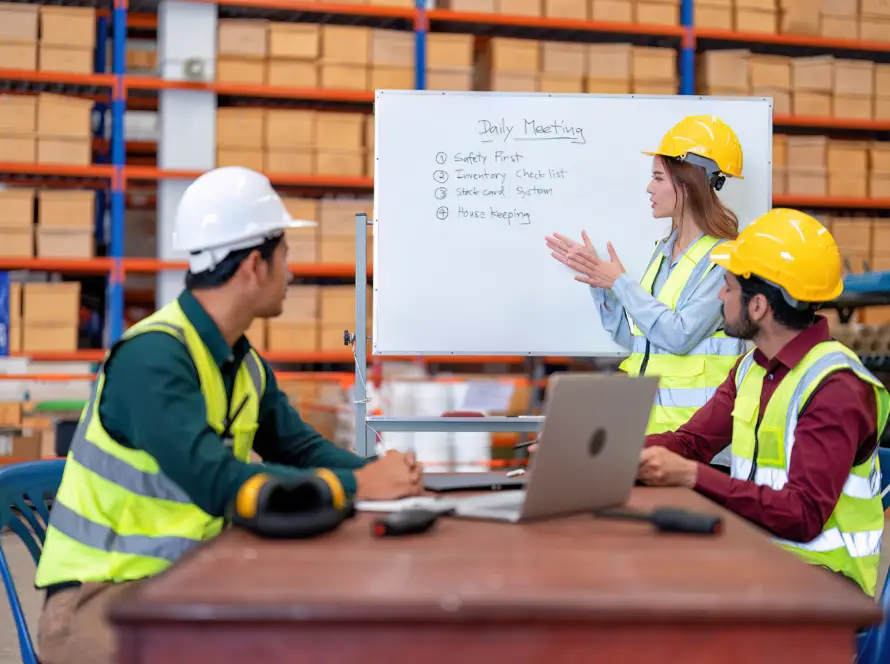In the dynamic environment of a warehouse, ensuring the safety of pedestrians is paramount. While safety barriers are a fundamental component of warehouse safety, integrating pedestrian alert systems can provide an additional layer of protection. This article explores how these two safety measures can work together to create a more secure workplace.
Current Challenges in Warehouse Safety
Warehouses are bustling environments where the movement of forklifts, heavy machinery, and pedestrians must be carefully coordinated. Safety barriers are traditionally used to define pathways and protect pedestrians from vehicular traffic. This relies on stringent traffic management plans that may not fit every warehouse set up.
The increasing focus on efficiency for warehouses and distribution centres is another factor that impacts the efficacy of static barriers. Order fill rates and picks per hour are common metrics that put pressure on teams to work faster and more efficiently. This can lead to personnel taking shortcuts around barriers or no-go zones to get the job done quicker. Safety implementations should work in harmony to achieve efficiency KPIs.
Complementary Roles of Pedestrian Alert Systems and Safety Barriers
Safety barriers serve as physical demarcations that prevent accidental crossings into hazardous areas. They are effective in guiding pedestrian traffic and providing a first line of defense against incidents. However, there are limitations when workers and machines can’t be segregated 100% of the time. A common example of this is loading docks. Drivers or personnel may be in close proximity to forklifts loading or unloading pallets.
Pedestrian alert systems complement these barriers by providing dynamic, real-time alerts to both operators and pedestrians. Here’s how they work together:
- Enhanced Awareness: While safety barriers guide and protect, forklift alert systems actively monitor blind spots for potential collisions, providing auditory or visual warnings that enhance situational awareness.
- Flexibility and Adaptability: Pedestrian alert systems can be adjusted to suit different warehouse layouts and traffic patterns, offering a level of flexibility that static barriers cannot. This adaptability ensures that safety measures remain effective even as warehouse operations evolve.
- Improved Traffic Flow Management: By integrating alert systems, warehouses can better manage traffic flow, ensuring that both pedestrian and vehicle movements are coordinated efficiently. This integration helps reduce congestion and potential conflicts, enhancing overall operational efficiency.
Integrating pedestrian alert systems with safety barriers in warehouses offers a comprehensive approach to enhancing safety. While barriers provide essential physical protection, alert systems add a dynamic element that keeps all personnel informed and alert. This synergy not only reduces accidents but also fosters a culture of safety and awareness. As warehouse operations continue to grow in complexity, leveraging both technologies will be key to maintaining a safe and efficient workplace.



